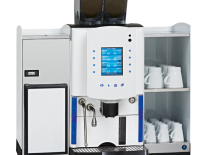Rope Access is a fruitful mode of safely working at height or in difficult to gain access to locations. Recreational abseiling techniques have now been adapted and developed over time for you to provide safe systems of work which are now employed for industrial, construction and maintenance purposes across many different industries and sectors.A quantity of associations and societies have already been created to develop and where possible regulate safe standards of rope access operations, two of the finest known that would be the Industrial Rope Access Trade Association, and the Society of Professional Rope Access Technicians. Both are widely recognised internationally, although SPRAT is probably most prevalent throughout North America, with IRATA being the absolute most dominant. SPRAT defines rope access as referring to a couple of techniques where ropes and specialized hardware are used as the primary way of providing access and support to workers. Generally a two-rope system is employed: the working rope supports the worker and the safety rope provides back-up fall protection. Check out the following website, if you are looking for more details concerning irata rope access.
IRATA defines their Industrial rope access systems as a safe approach to working at height where ropes and associated equipment are accustomed to get access to and from the workplace, and to be supported there. Although the particular training practices for technicians put down by SPRAT and IRATA, and the finer details of these guidelines for safe working practices differ in some ways, the fundamental principles of safe operations which are put down by both would be the same. Amongst the most crucial of the principles are that technicians must be suitably trained in both access and rescue, they mustn’t operate by themselves but as part of a group, that suitable specialised equipment is employed, and that that work is carried out of two independently rigged lines, among which is the working line, upon which the technician is supported and allows upward and downward movement, and the other may be the backup line, set up as a fail safe fall protection line.
The advantages of Rope Access as a mode of access are multiple. The combination of specialist training and the utilization of specific techniques and specialised equipment allows safe, efficient, cost-effective and versatile methods to work at height and difficult access problems. Technicians are independently trained and certified, and the techniques derive from caving and climbing techniques that have been progressed into a secure system of access for industrial purposes. The evolution of technique and equipment ever since then has resulted in the lowest incidence of accidents in the entire access sector.Installation and removing systems is quicker, and less disruptive than other access methods, and generally access can be gained to the work zone quicker, enabling faster completion. Less personnel requirements, less equipment and minimal downtime, are all factors which can make rope access more cost effective than the majority of alternatives, and systems could be adapted to safely provide solutions to a wide selection of work at height, vertical or difficult access scenarios, rendering it an extremely versatile access option.


